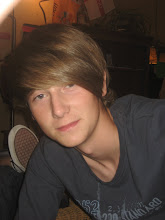Camera - Initial Point of View Shots allow the audience to see what is happening as the character does.
The audience is aware of the fact that the character doesn't know where they are. This is reflected in the
fact that the panning of the camera is quick, showing the characters distress and in the fact that there is
non-diegetic panting sound. From this is the director has effectively created suspense, a common
convention to the Thriller genre. Instead of switching to a close up of the characters face, the director
choses to use an over the shoulder shot to reveal the characters situation. This allows the audience to
engage with the character. The camera slowly zooms in on the character on the Television screen. The
director has chosen to do this to add emphasis to the importance of the character. In addition the director
uses a shot-reverse-shot technique to show the facial expression of the character as he hears what is
being said on the tele, further allowing the audience to engage. The director uses extreme close ups of
the characters eye to show the importance of it to the narrative of the text. The 360 degree panning of
the character shows the audience the full extent of the situation. In addition it helps build suspense as the

panning increases speed.
Editing - At the beginning of the text there are long takes. This helps
to establish the initial setting of the text. However as both character
and audience become aware of the distressful situation the pace of
the editing quickens. This builds on suspense increasing the audience
engagement. The director effectively quickens the pace to suit the
narrative of the text. This eventually leads to a montage sequence
continually building on suspense. After the climax of the action the
editing slows pace, thus allowing the audience to 'recover' from the
action. This is a common convention of Thriller movies.
Sound - At the beginning of the extract the director effectively
emphasises diegetic sound of the props in the scene. This adds to the
ambiguity of the situation. The director effectively uses non diegetic
eerie sounds to help build suspense. In addition it also gives the
audience the impression that the character was under sedation. This
provides an insight into the narrative of the text. As the character
realises his situation the sound levels increase as the the action
heightens. When the timer begins to start the non-diegetic sound stops.
The only sound comes from the ticking of the clock. This adds emphasis to the importance of time thus
heightening the suspense as time is against the character. In this text silence is used as effectively as loudness
The non-diegetic sound reaches a creshendo as the action reaches its peak. The director emphasises the diegetic
sound of the moving of the x-ray pictures. This helps to create suspense.
After the height of the action the non diegetic sound quietens. This suits the 'recovery' stage of the extract and
leads into the title scene.
Mise-en-scene - The decor of the room looks very real, however there is a low verisimilitude as the likely
chance that this situation would occur is very low. The opening shot is filmed using low key lighting.
This reflects the dark mood and atmosphere showing the audience the theme of the narrative. The colour
red is present in the text. Red has is culturally symbolic of danger and blood. This leads the audience to believe
that these will be present in the narrative of the text. The Television is used by the antagonist to communicate
to the characters. The use of common household objects as props in Thriller films is a common convention.
I believe the director chose to use a Television because the audience can relate to it. In addition through
effective use of narrative an technical codes the audience can engage with the text and come to fear the
object as much as the characters in the text.
Special Effects - The trap placed around the characters neck obviously isn't real. The special effects make it
appear very realistic. As a result there is more of a 'cringe' factor associated with the scene. This makes the
text more believable allowing the audience to engage more.
Titles - The title scene has an 'eerie' feel to it. The apparent floating text fades in then fades out. The director chose
this because it suits the genre of the text. An 'eerie' atmosphere is a common convention of all psychological thrillers.
The text is centralized, emphasizing its importance. The director chose to use white as the colour for the title.
White is symbolic of purity and innocence. The 'off' white colour helps to provide an insight into the narrative of
the text. Due to the symbolic meaning the 'off' white colour tells us that there will be a change to the purity or
innocence.




0 comments:
Post a Comment